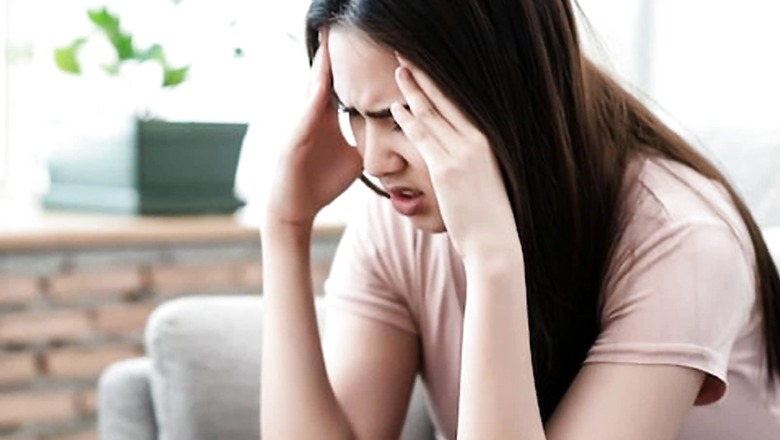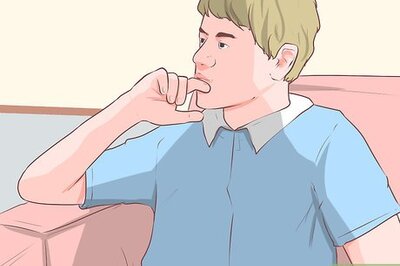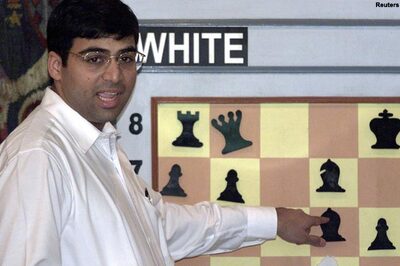
views
A migraine is more than just a headache. It is usually accompanied by pain, tiredness, nausea, visual disturbances, numbness and tingling, irritability, difficulty speaking and temporary loss of vision. A migraine attack can impair the functioning of everyday activities.
There are several types of migraine-like abdominal migraine, menstrual migraine, vestibular migraine, etc. Relief from a migraine is possible when you understand the attack phases and warning signals. Prof. Juergen Scheele, MD, PhD – Chief Medical Officer, Innoplexus, tells us the different phases of a migraine, warning signals and how to deal with it.
Phases of a migraine attack
Phase 1: Prodrome – The first phase of a migraine attack can begin anywhere between 24 to 48 hours before other phases. It is also called the ‘premonitory phase’ or the ‘pre-headache.’ If you recognize this phase, it is a warning sign of an upcoming migraine attack.
Phase 2: Aura – Aura is the change in the senses and is characterized by the most common change, vision change. About 25-30% of people with migraines will experience an aura, according to the American Migraine Foundation.[1]
Phase 3: Headache – This headache is characterized by pain on one side but can also spread to vision changes in the eyes. It is a pulsing and throbbing headache that can be mild or severe and worsen with physical activity.
Phase 4: Postdrome – This is the final period when people feel drained, exhausted, or hung over. Some people even feel euphoria or a heightened feeling of well-being. Depression or trouble concentrating, or understanding is also one of the symptoms.
Now that we have understood the phases of migraine, let’s get to know the warning signals.
Warning signals
By recognizing these warning signals, there is a possibility to get rid of some pain associated with a migraine attack. This could either be by taking medication or making lifestyle changes.
Having abnormal food cravings – Many times, odd food cravings signal the prodrome phase of migraine.
Yawning excessively – could result from changes in the neurotransmitter dopamine activity.
Neck pain or stiffness – Generally, people feel muscular pain due to the nerve fibers extending down from the brain to the cervical spine and looping back into the brain.
Feeling excessively sleepy during daytime – Feeling drowsy, sleep disorders, and daytime fatigue are warning signals of migraine.
Frequent urination – Frequent urination occurs during the premonitory phase of the migraine, according to the American Headache Society. This urge can be accompanied by pelvic pain.
Some simple steps to deal with migraine
Though there are medications available to treat migraine, making some lifestyle changes too can lessen the migraine pain or reduce the frequency of the pain.
Sleep Well – It is essential to get 7 to 8 hours of sleep in a day; try establishing a routine, so your sleep is not compromised.
Relaxing time – At the first sign of a migraine, try to relax your mind and move away from whatever you are doing. Turn off the lights and find a calm place to sit back and relax.
Eat healthily – Keep track of foods that trigger headaches and avoid them. Keep a food journal and avoid food like aged cheese, chocolate, caffeine, etc.
Exercise regularly – Exercise helps reduce anxiety and depression, two primary reasons for migraines in many cases.
Manage Stress – Better time management leads to lesser stress. Take a break in between, like getting up and taking a walk or sipping water slowly. You can also take time for deep breathing.
Alternative therapies
Since there is no cure for migraine, medications, lifestyle changes, diet, and alternative therapies can help provide relief.
Migraine can be triggered by subtle changes in hormones, inflammatory mediators, and nutritional deficiencies, which could be addressed with complementary therapies such as:
Acupuncture – This is a therapy wherein fine needles are inserted at specific points in the skin to modulate the central nervous system’s interpretation of pain. Acupuncture may help relieve headache pain, but many benefits may be due to nonspecific effects like placebo responses or relief expectations or beliefs rather than specific effects of needling.
Biofeedback – In biofeedback, electrodes are placed on the skin to measure heart rate, brain waves, and muscle tone. The findings can help understand the physiological stress response and teach the patient to self-regulate. Some studies reflected a decrease in the frequency of migraines in people using biofeedback. However, it’s unclear whether biofeedback is better than a placebo for migraines.
Massage – Tension in the muscles of the face, neck, or scalp can put pressure on the nerves and affect blood flow. Massage may help reduce tension and stimulate blood flow.
Relaxation techniques – these practices can produce the body’s natural relaxation response to help with migraine relief. However, biofeedback is winning over relaxation, as per some studies.
Tai Chi, yoga, and aerobic exercises – Tai chi combines deep breathing with meditation and slow, graceful movements. In some cases, there have been improvements in headache status and health-related quality of life on the tai chi program compared to others on a waitlist.
Non-invasive neuromodulation – Studies have shown that non-invasive neuromodulation is beneficial. The FDA has approved several non-invasive treatments, including TMS (transcranial magnetic stimulation) and TNS (Trigeminal nerve stimulation). In TMS, a brief magnetic pulse is applied to the scalp to stimulate nerve cells. In TNS, a battery-powered device is used to stimulate the nerve on the forehead called the trigeminal nerve. There is a lack of data on the long-term effects of neuromodulation. Still, as research progresses, new treatments will likely emerge that could provide an essential alternative to pharmacological therapy.
Read all the Latest Lifestyle News and Breaking News here

















Comments
0 comment